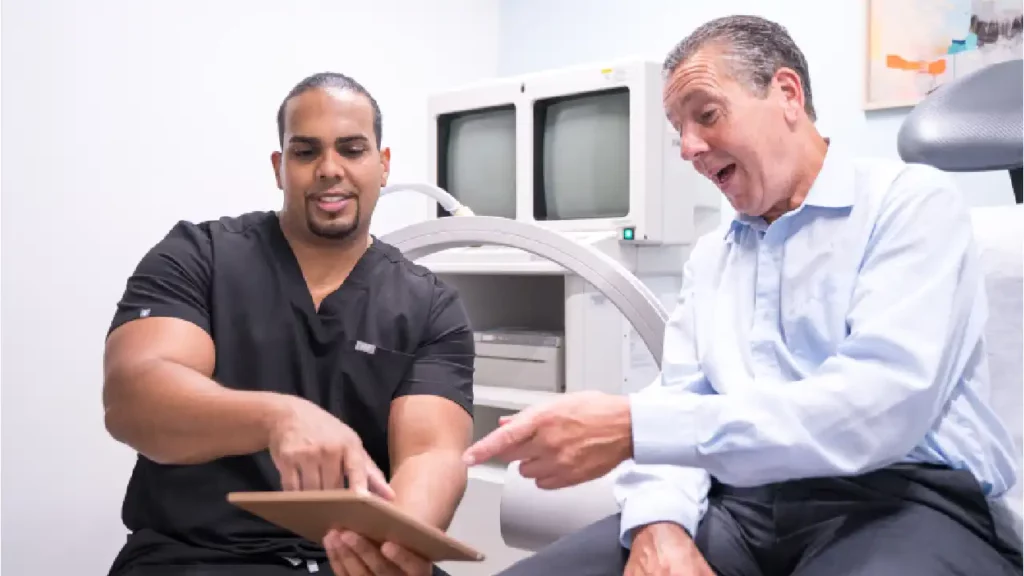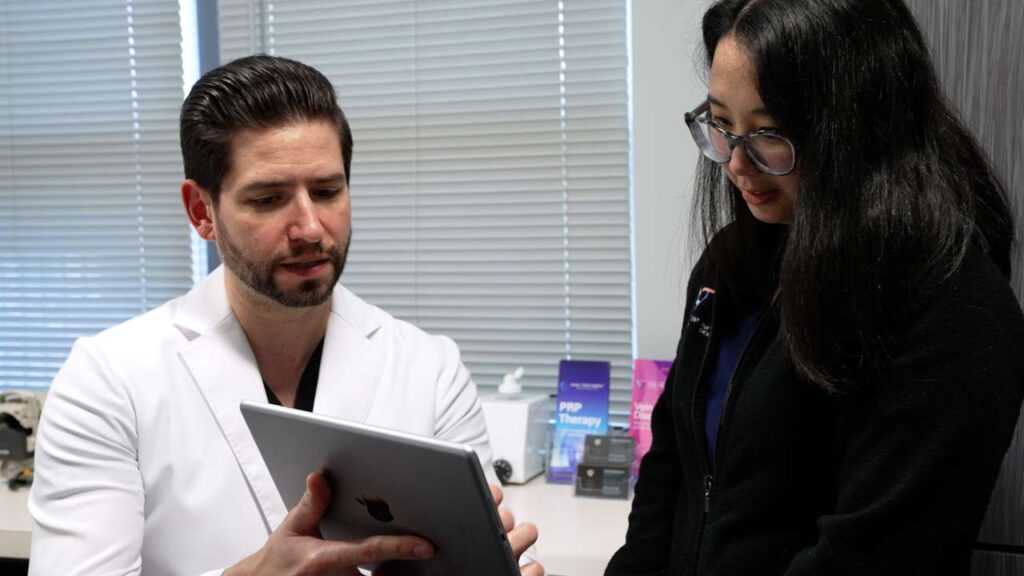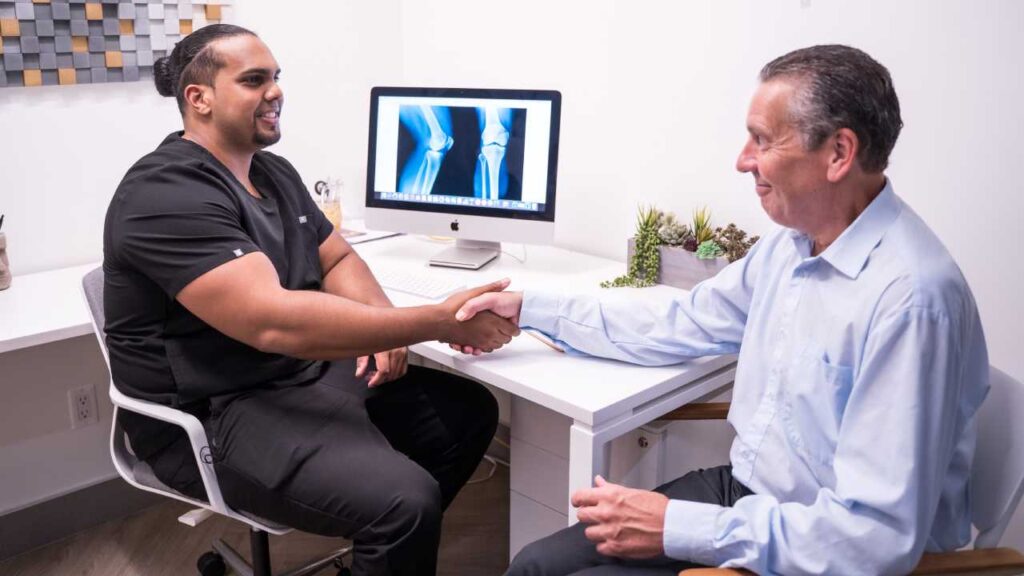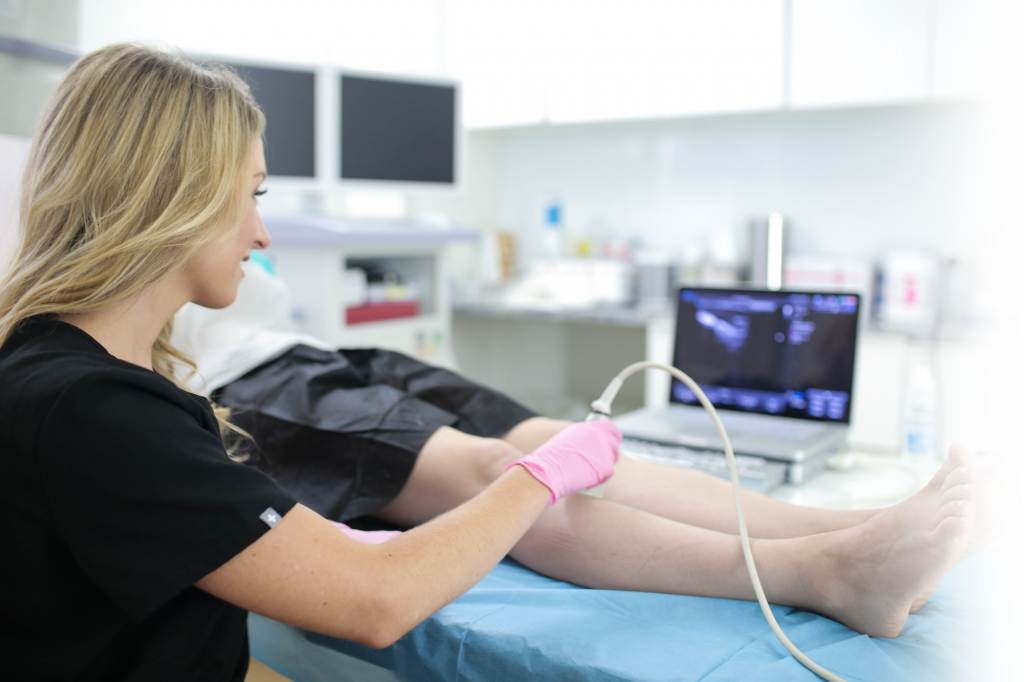When Are Lines on Legs Worrisome?
Varicose veins are common, especially in women. But that doesn’t mean they’re harmless. Some veins are asymptomatic and unproblematic. But varicose veins have a range of symptoms that include life-threatening complications. Below are 20 warning signs to help you determine when to worry about varicose veins.
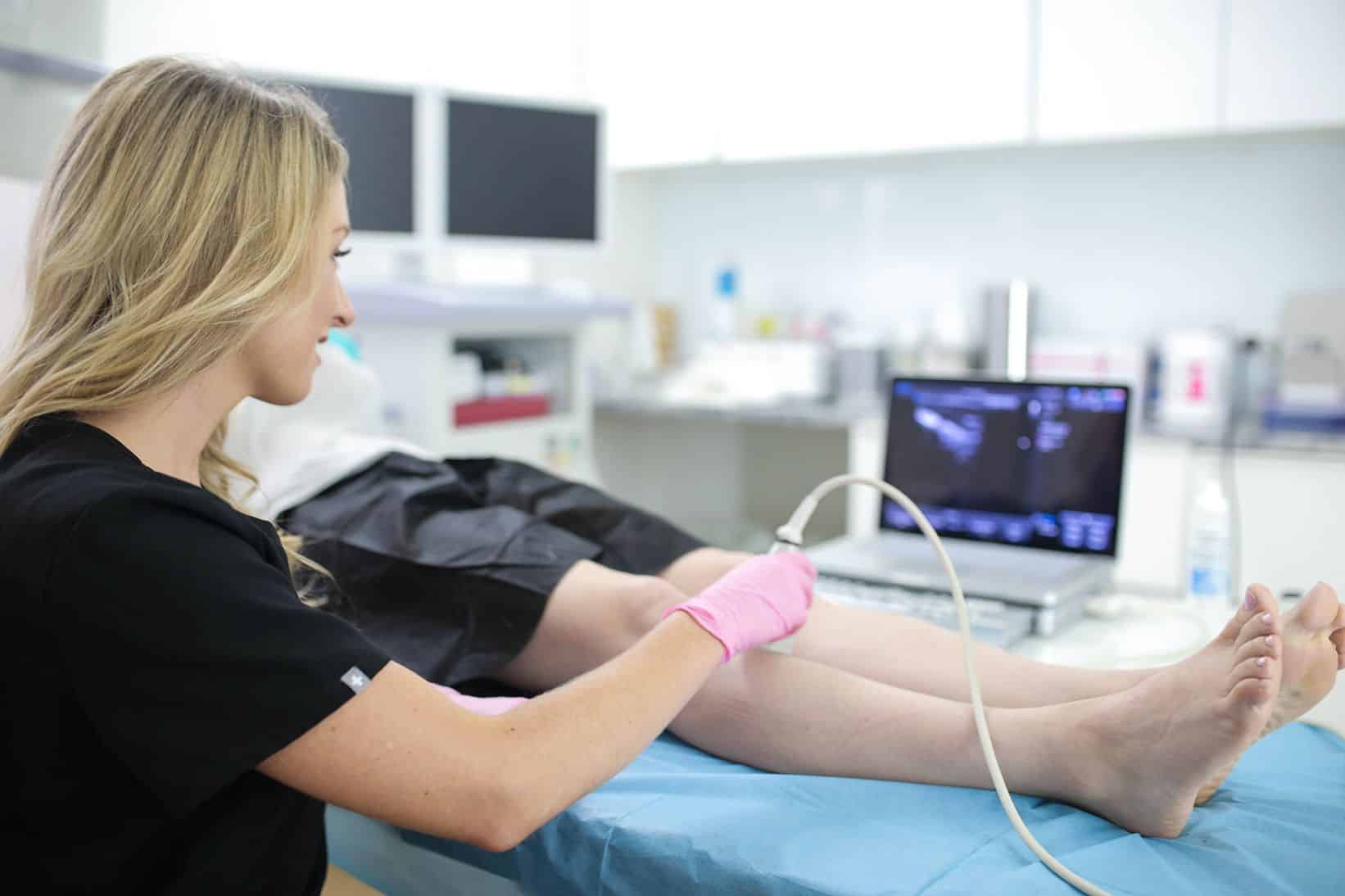
If you have any of the 10 red-flag symptoms, head to the emergency room. These symptoms could indicate a blood clot, deep vein thrombosis, pulmonary embolism, infection, or significant blood loss. If you have any of the 10 serious symptoms, book an appointment with our vein doctors promptly. These symptoms suggest you have Chronic Venous Insufficiency, a common, treatable disease that can become serious.
Red Flag Symptoms of Varicose Veins (Go to the ER):
- Chest pain
- Rapid breathing or coughing
- Fainting
- Heart palpitations
- Nausea or vomiting
- Uncontrollable bleeding
- Sudden red, swollen, warm spot
- Progressively red and oozing ulceration
- Warm, red streaks down the legs
- Fever (with venous ulcers)
Serious Symptoms of Varicose Veins (See a Vein Doctor Soon):
- Venous ulcerations
- Hyperpigmentation on lower limbs
- Venous stasis dermatitis
- Cramping or aching in legs
- Restlessness in legs
- Pinching sensations
- Heaviness in legs
- Leg swelling that worsens at night
- Leg fatigue after activity
- Flaky, leathery skin
What Problem with Vein Anatomy Causes Varicosities?
Varicose veins are often caused by Chronic Venous Insufficiency, which results in the serious symptoms listed above. The malfunction in this disease is valve failure. Veins have three layers, and the innermost layer has valves that close after blood flows through, to ensure that it moves toward the heart. When valves don’t close properly, blood flows backward and pools beneath the valve. This builds pressure within the vein, forcing it to stretch and contort. The result is the swollen, twisted varicose veins you see.
What Causes the Anatomy of Veins to Fail?
Several things cause valves to fail. Gender influences valve failure because hormone fluctuations impact blood volume and the size of the blood vessel. During pregnancy, blood volume doubles, making veins stretch. That can result in valves not closing tightly. Birth control usage and menopause have similar impacts. The hormonal effect explains why varicose veins are prevalent in women.
Some valves fail because aging weakens them. Weight gain puts pressure on veins as well, increasing the likelihood of valve failure. Gravity makes it harder for leg veins to pump blood to the heart, so leg veins are prone to valve failure. Inactivity contributes to varicose veins. But the top predictor of varicose veins is a family history of them. Here are factors that increase your risk.
Risk Factors for Varicose Veins:
- Family history of vein health issues
- Chronic Venous Insufficiency
- Female gender
- Pregnancy
- Birth control
- Menopause
- Aging
- Obesity
- Inactivity
- Jobs with prolonged sitting or standing
Can Tiny Veins Be Dangerous Too?
Varicose veins are often large and protuberant. But there’s another type of vein that indicates Chronic Venous Insufficiency. When valve failure forces blood to accumulate, tiny veins can form and branch out from overburdened blood vessels. These are spider veins. They don’t look like varicose veins, but they have similar symptoms.
Cramping, itching, swelling, restlessness, heaviness, and fatigue are common when spider veins stem from Chronic Venous Insufficiency. If you have spider veins, see a vein doctor to determine whether you have this disease.
Is a Popped Vein in Wrist as Serious as a Bulging Leg Vein?
Varicose veins can develop anywhere. They’re more prevalent in the lower extremities because leg veins pump blood while combatting the gravitational pull and the burden of body weight. If you have a popped vein in the wrist, forehead, or anywhere with thinner skin, it might be varicose, but it might also be healthy. Veins naturally shrink and expand to accommodate fluctuations in blood flow. That shift is easier to see in areas with less fat.
When you take a hot shower, your heart rate increases. Normal veins expand for this temporary increase in blood pressure. They reduce in size once you cool down. It’s common to see a vein in the wrist or forehead pop out when blood pressure is elevated. But varicose veins also change in size, so see a vein specialist for a diagnosis. Varicose veins in the wrist are less common than in the legs, but they do occur.
If You Don’t Treat Varicose Veins, Do They Become Dead Veins?
The worst case for varicose veins is a life-threatening complication. This includes developing blood clots that travel to the lungs, causing pulmonary embolisms. Another life-threatening complication is an infected venous ulceration. In rare cases, they can cause widespread infections. A third life-threatening risk is a varicose vein that starts bleeding and can’t be controlled. If you don’t seek help promptly, this can cause significant blood loss.
Life-threatening complications are rare, but they happen. See a vein doctor to prevent them. Some people refer to varicose veins as dead veins. What they really are is a dead end for your circulation. They don’t pump blood efficiently to the heart. Varicose vein treatment closes them off and reroutes blood into veins that pump blood to the heart.
Can a Leg Veins Diagram Determine If Veins Are Worrisome?
Are varicose veins dangerous? They certainly can be. Instead of wondering when to worry about varicose veins, avoid worrying altogether. Schedule a leg veins diagram. Vein doctors perform vein mapping tests that determine the health of your veins. They bounce sound waves off of each vein in question to see if it’s blocked or engorged.
Veins make different sounds based on how blood is flowing through them, and these sounds are converted to images vein doctors analyze. No one knows what’s happening in their deeper veins, where valve failure and blood clots often hide. Vein mapping removes the mystery to prevent complications.
What Else Can a Diagram of Veins in Legs Reveal?
A diagram of veins in the legs can tell doctors if you have a blood clot, deep vein thrombosis, broken valve, vein disease, Chronic Venous Insufficiency, and more. If you have spider veins or varicose veins, these tests provide helpful answers to protect your vascular health. If vein issues or blood clots run in your family, it’s a good idea to get your veins mapped, even if you haven’t begun developing varicose veins.
Where Can You Get a Leg Vein Diagram in New Jersey?
Only certain vein centers offer this vital technology. In New Jersey, visit any of our award-winning vein center locations in Paramus, Woodbridge, Scotch Plains, Clifton, or Woodland Park.
After a Veins in Legs Diagram, Will You Need Treatment?
After getting the veins in your legs diagrammed, vein doctors will know whether you need varicose veins treatment or whether you can try tactics like compression stockings. Sometimes, they know instantly. Other times, they need to conduct blood work, run more tests, or study the images before choosing your treatment.
The vein mapping diagram also helps the vein doctor know where to administer treatment for a safe and successful procedure. Specialists without this technology risk ineffective or inaccurate treatments. But our physicians use ultrasound guidance to diagnose veins and administer precise treatments.
How Do Vein and Pain Treatment Clinics Treat Varicose Veins?
There are several quick and gentle ways to treat varicose veins if you choose a minimally invasive vein specialist. These doctors avoid surgery when possible and treat varicose veins by closing them with heat, medications, or adhesives.
Our team uses innovative techniques like sclerotherapy, endovenous laser ablation, radiofrequency ablation, cyanoacrylate glue, and mechanochemical ablation. Each treatment takes 15-30 minutes and requires no general anesthesia or recovery time. Book your consultation today!
